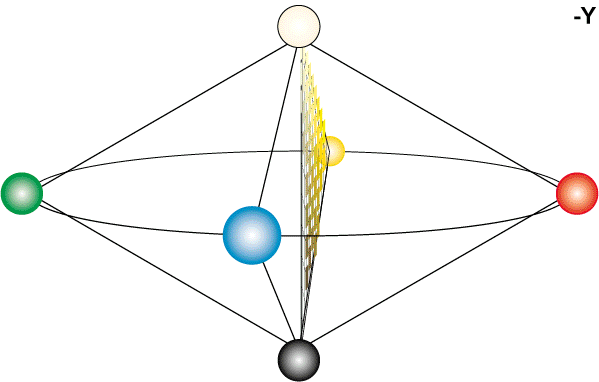OpticsEngineer
Veteran Member
All my old optical textbooks break up the rainbow into six colors bands. (Red, Orange, Yellow, Green, Blue, Violet)
The familiar picture of a prism on the Pink Floyd's The Dark Side of the Moon also depicts six color bands (from 1973).
However, I see on Wikipedia the assignment of seven color bands. (Red, Orange, Yellow, Green, Cyan, Blue, Violet)
Visible spectrum - Wikipedia
I am looking at my Dark Side of the Moon album cover and the color between green and violet looks blue (and a very lovely blue too I might add), whereas when I pull up an image on it on my computer monitor, what I see in between green and violet looks like cyan.
Is the assignment of seven color bands in the spectrum becoming an accepted system? Maybe driven by the increasing use of electronic displays?
I have been using blue and cyan optical filters for my entire career, and navigating the worlds of additive and subtractive colors with clarity of communication with other professionals. But is there shift going on in terminology that I need to keep up with?
(edit: within five minutes of posting this I got three advertisements on my web browser for cyan house paints. make of that what you will)
The familiar picture of a prism on the Pink Floyd's The Dark Side of the Moon also depicts six color bands (from 1973).
However, I see on Wikipedia the assignment of seven color bands. (Red, Orange, Yellow, Green, Cyan, Blue, Violet)
Visible spectrum - Wikipedia
I am looking at my Dark Side of the Moon album cover and the color between green and violet looks blue (and a very lovely blue too I might add), whereas when I pull up an image on it on my computer monitor, what I see in between green and violet looks like cyan.
Is the assignment of seven color bands in the spectrum becoming an accepted system? Maybe driven by the increasing use of electronic displays?
I have been using blue and cyan optical filters for my entire career, and navigating the worlds of additive and subtractive colors with clarity of communication with other professionals. But is there shift going on in terminology that I need to keep up with?
(edit: within five minutes of posting this I got three advertisements on my web browser for cyan house paints. make of that what you will)
Last edited:



